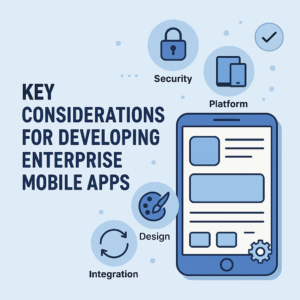Introduction
The landscape of mobile app interfaces has undergone a remarkable transformation since the inception of smartphones. From the humble beginnings of physical buttons to the sophisticated gesture-based controls of today, mobile app interfaces have evolved to enhance user experience, streamline interactions, and leverage advances in technology. This article will explore the journey of mobile app interfaces, examining the pivotal changes that have shaped user interaction and the future trends that may redefine how we engage with our devices.
Historical Overview
- Early Mobile Interfaces (2000s): The early 2000s marked the dawn of mobile applications with simple, text-based interfaces. Phones featured physical buttons for navigation, with menu-driven experiences that required users to scroll through lists to access features. This design was functional but limited, requiring considerable effort for users to find and execute tasks.
- Introduction of Touchscreens (2007): The launch of the iPhone in 2007 revolutionized mobile interfaces. The introduction of capacitive touchscreens allowed for a more dynamic and intuitive user experience. With the ability to tap, swipe, and pinch, users could interact with apps in ways that felt natural and engaging. This shift towards touch-based interfaces paved the way for app design to evolve significantly, as developers began to rethink how applications should be structured and navigated.
- Emergence of App Stores (2008): The introduction of app stores allowed developers to create and distribute applications on a larger scale. This era saw the birth of various design paradigms, including skeuomorphism, which aimed to mimic real-world objects within the app environment. This design philosophy created familiarity for users but soon faced criticism for cluttering interfaces and hindering usability.
Page 2: The Rise of Minimalism and Gestures
The Rise of Minimalism
- Transition to Flat Design (2013): As mobile app interfaces matured, a shift towards flat design began to emerge. This design philosophy emphasized simplicity, using clean lines, bold colors, and ample white space to create a more streamlined experience. Apple’s iOS 7 and Google’s Material Design exemplified this trend, focusing on usability and accessibility. By reducing visual clutter, these design languages allowed users to navigate applications more intuitively.
- User-Centric Design: The focus on user experience led to the adoption of user-centric design principles. Developers began to prioritize user feedback, conducting usability tests to refine interface elements. The result was a more engaging and effective user experience, where applications catered to the needs and behaviors of their target audience.
The Gesture Revolution
- Gestural Interfaces: The introduction of gesture-based interactions marked a significant milestone in mobile app interfaces. Users became accustomed to using gestures like swiping, pinching, and tapping to navigate and interact with apps. This shift not only enhanced the speed and efficiency of interactions but also made interfaces feel more fluid and responsive.
- Integration of Advanced Technologies: With the advent of technologies like 3D Touch and haptic feedback, gestures became even more sophisticated. Users could access additional features through long-presses or subtle movements, further streamlining interactions. This emphasis on gestures highlighted the importance of creating a seamless user experience that minimizes cognitive load and encourages intuitive interactions.
Page 3: The Future of Mobile App Interfaces
The Future of Mobile App Interfaces
- Voice User Interfaces (VUIs): As voice recognition technology continues to advance, we are likely to see a rise in voice user interfaces. Voice commands will complement gesture-based controls, providing users with hands-free options for navigating apps and executing tasks. This integration will be particularly beneficial for users with disabilities, making mobile technology more accessible to everyone.
- Augmented Reality (AR) and Virtual Reality (VR): The incorporation of AR and VR technologies will further reshape mobile app interfaces. Users may interact with digital content overlaid onto their physical environments, using gestures and voice commands to manipulate objects within a virtual space. This paradigm shift will not only change how we engage with applications but will also create new opportunities for immersive experiences across various industries.
- Biometric and Emotion Recognition: Future interfaces may leverage biometric data and emotion recognition technologies to enhance personalization. By analyzing user behaviors and emotional responses, apps could adapt their interfaces in real-time, creating a more tailored experience. This approach has the potential to revolutionize user interactions, making them more intuitive and responsive to individual needs.
Conclusion
The evolution of mobile app interfaces from buttons to gestures illustrates the rapid advancements in technology and design philosophy. As we look ahead, it is essential for developers and designers to continue exploring innovative ways to enhance user interaction. By embracing emerging technologies and prioritizing user experience, we can create mobile applications that are not only functional but also deeply engaging and accessible.
The future of mobile app interfaces promises exciting possibilities, where intuitive gestures, voice commands, and immersive experiences redefine how we interact with technology. By understanding the history and embracing the future, we can create apps that resonate with users and stand the test of time.





